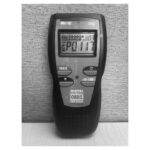The OBD2 (On-Board Diagnostics, Second Generation) system in your vehicle plays a crucial role in monitoring its emissions and overall performance. A key component of this system is the MIL (Malfunction Indicator Lamp), often referred to as the “check engine light.” This article will delve into the Obd2 Mil, explaining its function, common causes for illumination, and what steps to take when it comes on.
What is the OBD2 MIL?
The OBD2 MIL is a warning light on your dashboard that illuminates when the OBD2 system detects a potential problem with your vehicle’s emissions system or other critical components. It typically appears as a stylized engine outline or the words “Check Engine.” The MIL can illuminate steadily or flash, depending on the severity of the issue. A flashing MIL often indicates a serious problem that requires immediate attention.
Why is My OBD2 MIL On?
There are numerous reasons why your OBD2 MIL might illuminate. Some common causes include:
-
Loose or Damaged Gas Cap: A loose or damaged gas cap can allow fuel vapors to escape, triggering the MIL. This is often the easiest fix, simply tightening or replacing the gas cap. However, it’s crucial to continue monitoring the MIL after tightening the cap. If it doesn’t turn off after a few driving cycles, a more serious issue might be present.
-
Oxygen Sensor Problems: Oxygen sensors monitor the oxygen levels in your exhaust to ensure efficient fuel combustion. A faulty sensor can lead to increased emissions and reduced fuel economy, illuminating the MIL.
-
Catalytic Converter Issues: The catalytic converter converts harmful pollutants in exhaust gases into less harmful substances. A malfunctioning catalytic converter can significantly increase emissions, triggering the MIL and potentially leading to costly repairs.
-
Mass Airflow Sensor Malfunction: The mass airflow sensor measures the amount of air entering the engine. A faulty sensor can disrupt the air-fuel mixture, leading to poor performance and illumination of the MIL.
-
Spark Plug or Ignition Coil Problems: Worn or faulty spark plugs or ignition coils can cause misfires, which increase emissions and trigger the MIL. A misfire can also damage the catalytic converter over time.
-
EGR Valve Issues: The Exhaust Gas Recirculation (EGR) valve helps reduce emissions by recirculating a portion of exhaust gases back into the engine. A malfunctioning EGR valve can disrupt this process, leading to increased emissions and illumination of the MIL.
-
Evaporative Emissions System Leaks: Leaks in the evaporative emissions system, which prevents fuel vapors from escaping into the atmosphere, can trigger the MIL. This can be caused by a faulty gas cap, damaged hoses, or a malfunctioning charcoal canister.
What to Do When the OBD2 MIL Illuminates
If your OBD2 MIL comes on, it’s important to take action:
-
Don’t Panic: While the MIL can be concerning, it doesn’t always indicate a catastrophic problem.
-
Check Your Gas Cap: Ensure your gas cap is tightly secured.
-
Monitor the Light: Observe if the light is steady or flashing. A flashing light signifies a more urgent issue.
-
Use an OBD2 Scanner: An OBD2 scanner can retrieve the specific trouble code stored in the vehicle’s computer, providing valuable information about the problem. Many affordable OBD2 scanners are available on the market.
-
Consult a Mechanic: If the MIL persists or you’re unsure about the diagnosis, consult a qualified mechanic for professional diagnosis and repair. Ignoring the MIL can lead to further damage and potentially more expensive repairs down the road.
Conclusion
The OBD2 MIL is a valuable tool for monitoring your vehicle’s health and emissions performance. Understanding its function and common causes of illumination can help you address potential problems promptly and avoid costly repairs. Utilizing an OBD2 scanner and seeking professional help when needed will ensure your vehicle runs smoothly and efficiently while minimizing its environmental impact.

